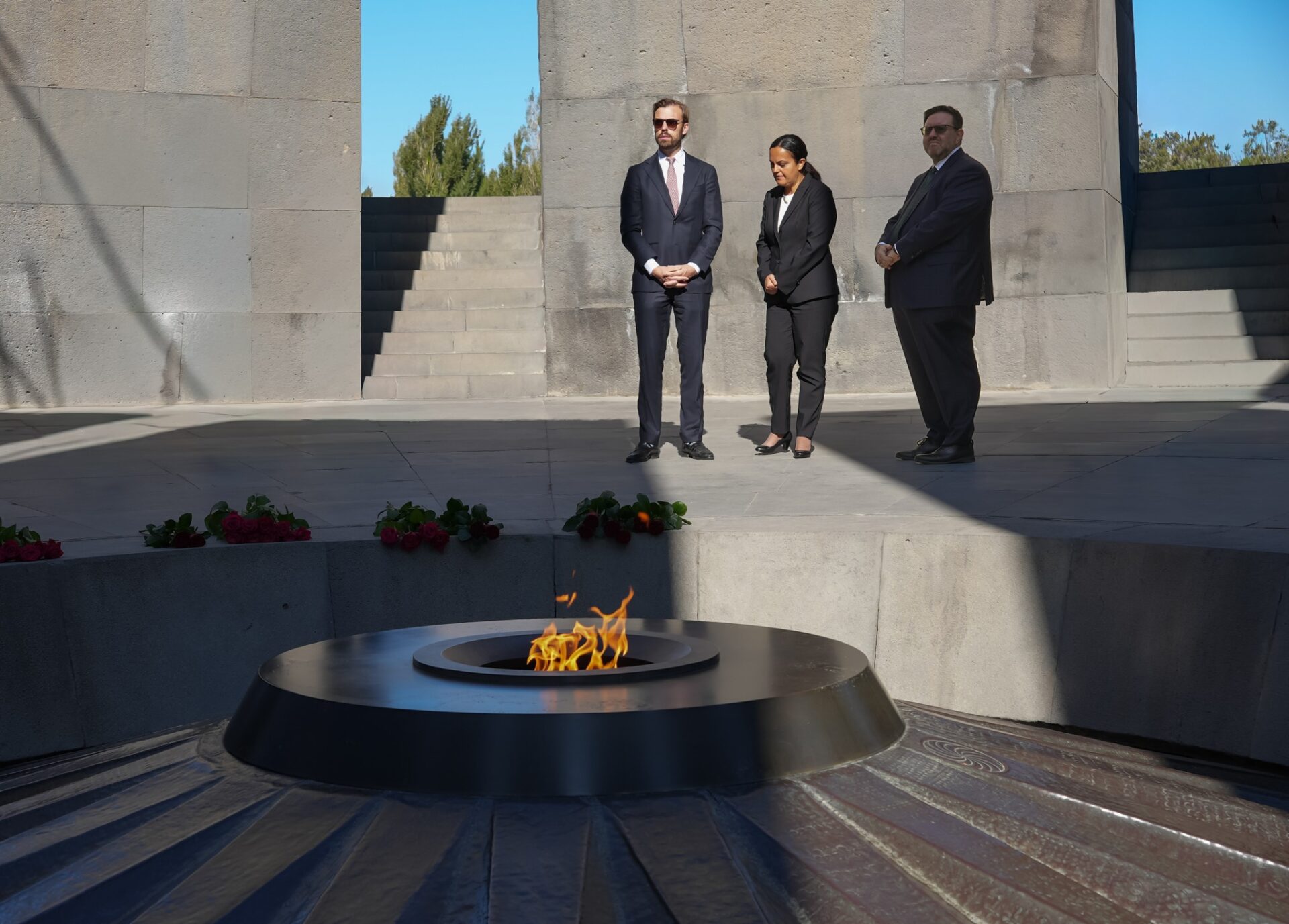A senior U.S. delegation led by Brendan Hanrahan, Director and Senior Bureau Official for the U.S. State Department’s Bureau of European and Eurasian Affairs, visited the Tsitsernakaberd Armenian Genocide Memorial Complex in Yerevan on September 12 to pay tribute to the victims of the Armenian Genocide, reports the Armenian Genocide Museum-Institute (AGMI).
The group was welcomed by Edita Gzoyan, Director of the Armenian Genocide Museum-Institute, who guided the delegation through the memorial and presented the history of its creation. She spoke about the three khachkars (cross-stones) commemorating Armenians massacred during the late 20th-century pogroms in Sumgait, Kirovabad (Ganja), and Baku, which were organized by the Azerbaijani government, as well as the graves of five Armenian freedom fighters buried near the Memorial Wall during the Artsakh War, stressing the historical connection between these events and the Armenian Genocide.
Hanrahan laid a wreath at the monument honoring the victims, after which delegation members placed flowers at the eternal flame and observed a moment of silence in remembrance of the innocent victims.
Gzoyan also guided the visitors to the Memorial Wall of Remembrance, where small urns are kept containing soil from the graves of foreign statesmen, public figures, intellectuals, and missionaries who spoke out against the massacres and genocide of Armenians in the late 19th and early 20th centuries. She highlighted the humanitarian efforts of Henry Morgenthau, the U.S. Ambassador to the Ottoman Empire during the genocide, and Clara Barton, founder of the American Red Cross, noting that thanks to their work, the American public was well informed about the atrocities committed in the Ottoman Empire. Gzoyan emphasized that the U.S. recognition of the Armenian Genocide also serves as a tribute to their legacy.
At the conclusion of the visit, AGMI Director Edita Gzoyan presented Brendan Hanrahan with books on the Armenian Genocide as a token of gratitude.


